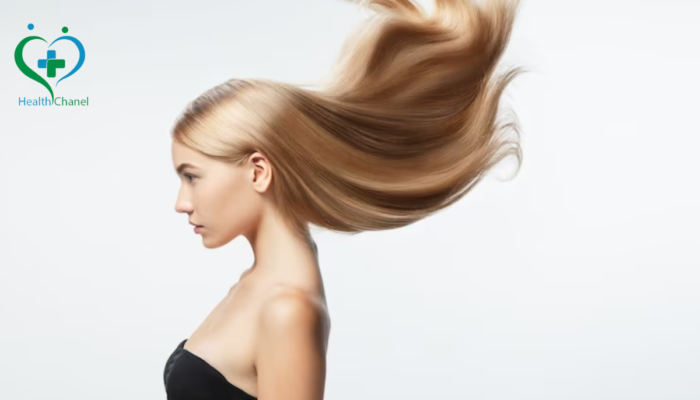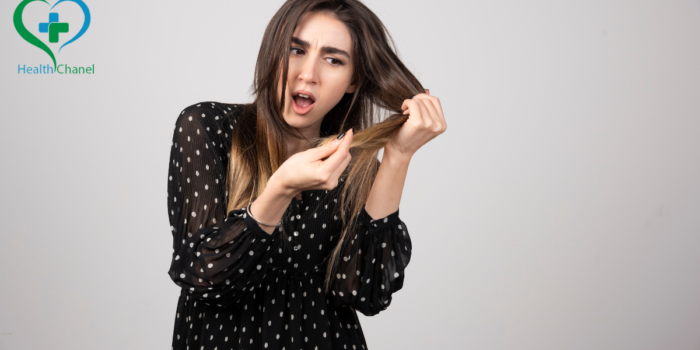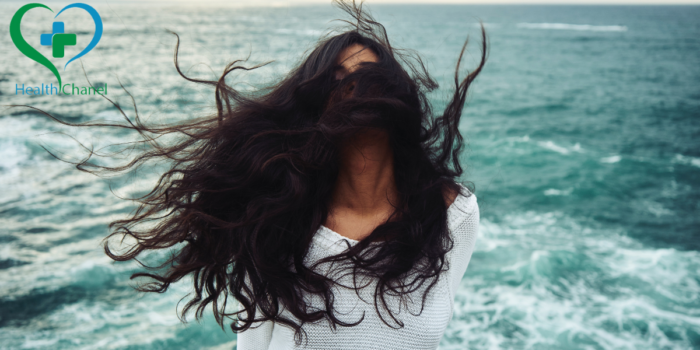Hair loss and thinning hair are common problems that affect both men and women. While…
Best hair loss treatment for female

Hair loss can feel devastating for any woman. Seeing your strands thin bit by bit impacts self-esteem and can take a major emotional toll. The good news is that there are many effective medical treatments available today for regrowing hair and stopping shedding associated with female pattern baldness. Finding the best hair loss treatment for female hair loss depends on understanding your specific triggers, evaluating the pros and cons of options, and working closely with a specialist to determine an optimal regimen.
What Causes Thinning Hair and Hair Loss in Women?
There are a number of possible causes contributing to excessive shedding and progressive thinning of the hair on a woman’s scalp:
- Hormonal changes and imbalances
- Nutritional deficiencies
- Medical conditions
- Medications
- Genetics
- Aging
- Scalp conditions
- Stress
- Aggressive hair styling
By identifying the factors involved, the best hair loss treatment for female pattern baldness can be selected to properly target the cause.
Best Hair Loss Treatment for Female Pattern Baldness
The most effective options for treating thinning hair and best hair loss treatment for female include:
Minoxidil
Minoxidil is the only FDA-approved, over-the-counter medication formulated specifically for treating female pattern baldness. The topical solution, applied to the scalp twice daily, can help halt hair loss and trigger regrowth of miniaturized follicles. Around 40% of women see moderate regrowth with continued use. It may also cause unwanted facial hair growth in some cases.
Spironolactone
Spironolactone is an oral tablet taken daily that works as an androgen blocker to stop hair loss and encourage new growth. It inhibits dihydrotestosterone (DHT) around the follicles. DHT contributes to hair follicle shrinkage and shorter growth phases. Doctors may prescribe spironolactone off-label for best hair loss treatment for female at doses from 50-200 mg daily.
Low-Level Laser Light Therapy
Low-level laser light therapy (LLLT) is a non-invasive treatment that uses light energy to stimulate shrunken hair follicles. This helps reactivate growth and slow down shedding. LLLT is available in some dermatology offices and salons. It’s often combined with other hair loss treatments like minoxidil. Minimal side effects have been reported. Multiple weekly sessions give the best results.
Platelet-Rich Plasma (PRP)
PRP has emerged as one of the most promising new treatments for female hair loss in recent years. It harnesses growth factors from your own blood to rejuvenate follicles. Blood is drawn, spun, and the plasma is injected back into the scalp. Multiple monthly treatments are needed, but significant regrowth is seen in around 60% of women who try PRP.
Anti-Inflammatory Diet & Scalp Massage
Scalp inflammation damages follicles and impedes healthy hair growth. An anti-inflammatory diet high in omega-3 fatty acids can help reduce inflammation. Massaging the scalp boosts circulation so strands get more nutrients. This combination supports hair regrowth from within.
Biotin Supplements
Biotin is a B-complex vitamin that promotes keratin production. Keratin is the protein that comprises hair strands. Taking a daily biotin supplement helps ensure hair follicles get enough of this essential nutrient for optimal growth. It may help reduce shedding and increase thickness over time.
DHT-Blocking Treatments
Both oral and topical DHT-blocking treatments may stop hair loss and encourage regrowth by neutralizing DHT around the follicles. Spironolactone is an oral option, while over-the-counter topical solutions include Revivogen and Rogaine for women. Using a multidimensional approach can strengthen results.
Hair Transplants
Hair transplants involve redistributing productive follicles from fuller areas of the scalp to thinning patches. Transplanted hair grows naturally and is permanent. Recovery takes around 2 weeks and several sessions are usually required. When performed by an experienced surgeon, transplants can help restore fullness. This option is expensive but provides lasting results.
When to See a Doctor for Best hair loss treatment for female
If you notice progressive thinning hair or bald patches, it’s important to schedule an appointment with your doctor or dermatologist. Diagnostic tests can help determine the factors contributing to your hair loss. Your provider may recommend:
- Physical exam of the scalp and hair
- Trichoscopy to examine hair close-up
- Blood tests to check for hormonal/nutritional causes
- Scalp biopsy to check for infections
- Medical history review
- Ultrasounds or other imaging
Getting proper diagnosis and care early on gives you the best chance of successfully treating female pattern hair loss.
Best hair loss treatment for female: Tips for Coping With Hair Loss in Women
While working to regrow your hair, consider these coping strategies:
- Embrace shorter hairstyles and styling tricks to maximize fullness
- Use semi-permanent scalp concealers like hair fibers
- Incorporate headbands, hats, scarves, and wigs as desired
- Avoid hairstyles that pull tightly on the roots
- Focus on your best features besides hair
- Join support communities to connect with other women experiencing hair loss
- Remind yourself daily that beauty comes from within
Having a robust emotional support system can help you stay motivated until the treatments restore your hair’s thickness.
Best hair loss treatment for female: Emerging and Future Hair Loss Treatments for Females
Some emerging treatments that show promise for treating female pattern baldness include:
- Oral anti-androgens like dutasteride that more potently block DHT
- More advanced LED light therapies to stimulate follicles
- Microneedling in conjunction with topical treatments
- Growth factors and stem cell research to regenerate follicles
- Further study of botanical compounds that may help
- Developing gene therapies to correct hormonal causes
- Scalp microbiome manipulation
- Nanotechnology and 3D bioprinting of new follicles
Exciting new solutions are on the horizon. Consistency with today’s proven medical treatments can restore hair while we await future technologies.
Best hair loss treatment for female: Choosing the Right Hair Loss Specialist
Getting properly diagnosed and effectively treated requires finding the right doctor for your needs. Look for these traits:
- Advanced certifications in hair disorders
- Active in hair loss research/clinical trials
- Use of high-tech diagnostic tools
- Experience successfully treating female hair loss
- Patient-centered approach
- Provides ongoing monitoring and measurement
Work collaboratively to establish a customized treatment plan. Adjust therapies over time as needed. Consistency is critical, so choose a doctor who offers support.
Best hair loss treatment for female: Lifestyle Changes That Can Help Treat Hair Loss
While using medical treatments externally, also nurture your hair from within:
- Eat protein-rich foods like eggs, meat, nuts, beans
- Get omega-3 fatty acids from salmon, walnuts, flaxseed
- Take vitamins like iron, zinc, biotin, vitamin D
- Drink plenty of water to stay hydrated
- Manage stress through yoga, meditation, etc.
- Scalp massage to increase circulation
- Avoid tight hairstyles that pull on roots
- Limit heat styling and over-processing hair
- Use conditioners and handle hair gently
A healthy lifestyle complements your hair regrowth plan.
The Emotional Impact of Hair Loss in Women
It’s completely normal to feel distressed about visible hair thinning and shedding. Hair is intertwined with femininity and attractiveness for many women. Sudden changes can damage self esteem. Know you aren’t alone. Seek support and practice self-care. Stay motivated knowing solutions exist for regrowing hair.
Finding Hope With Hair Loss Treatments
The variety of proven medical treatments provide real hope for women dealing with distressing hair loss. Consistency and patience are key – it takes time to notice a significant difference. But the best hair loss treatment for female pattern baldness combined with emotional support and positive lifestyle habits can help you achieve fuller, healthier hair.
While an absolute cure doesn’t yet exist, continued progress combating the causes gives reason for optimism. There are solutions. Work collaboratively with your doctor, be open about your struggles, and keep focused on restoring your hair’s thickness.
Conclusion
Dealing with excessive hair shedding or seeing your hair thin bit by bit can feel devastating for any woman. Hair is so intertwined with self-image and femininity for many females. Fortunately, there are best hair loss treatment for female available for stopping hair loss and regrowing healthier, fuller locks.
Finding the best hair loss treatment for female pattern baldness depends on properly diagnosing your specific triggers, evaluating the pros and cons of the options, and customizing a regimen with an experienced hair restoration physician. Consistency and patience are crucial when using treatments – it takes 3-6 months to notice significant improvements.
Along with medical treatments, incorporating emotional support, gentle hair care, a healthy lifestyle and positive thinking can help you achieve healthier, fuller hair. Stay patient and persistent. There are solutions to female hair loss. The best hair loss treatment for female pattern baldness combined with daily care and self-love can help you regrow the hair you want.


